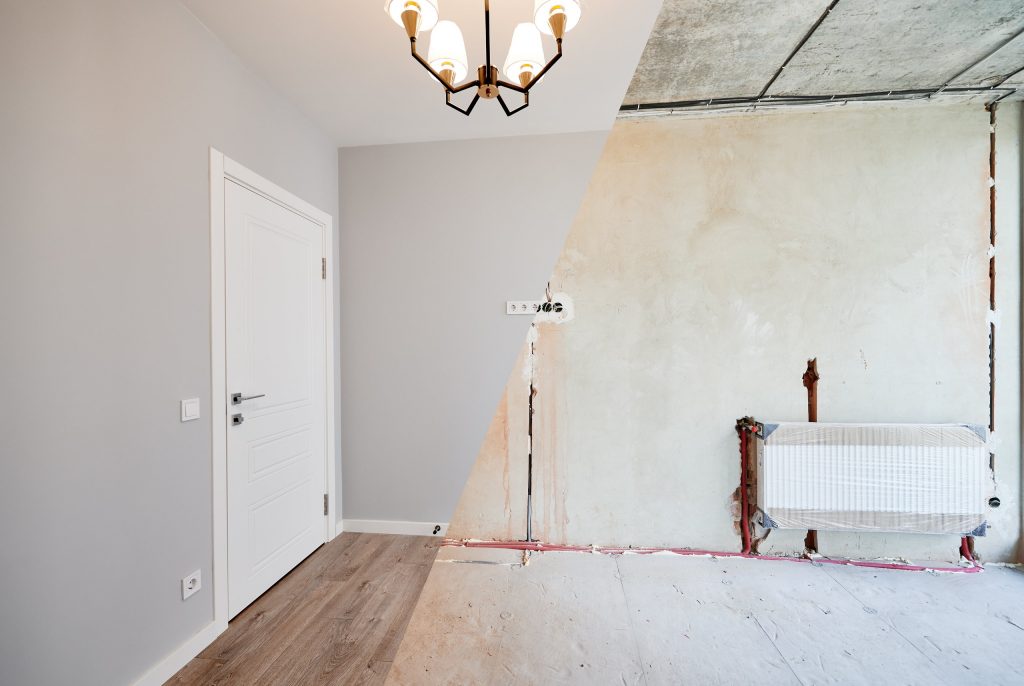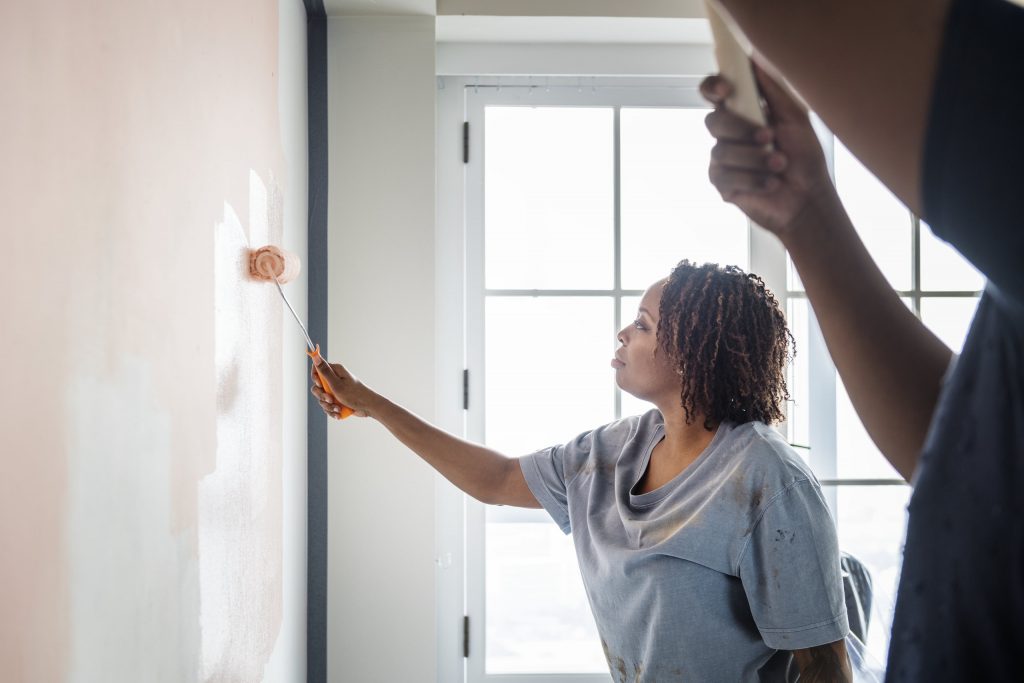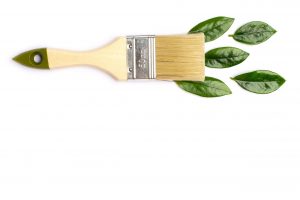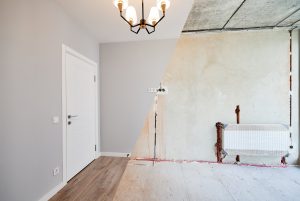Brighten Up: How To Paint Over Dark Walls For A Flawless Finish

Painting over dark tones might be challenging, but with the right techniques and preparation it is very feasible. Dark tones could need more effort to get the desired finish when switching to lighter hues. The trick is to choose the right paint kind and prime correctly to prevent bleeding of the darker tones through the new layer. With the right tools and time, anybody can efficiently transform a space.
Changing the atmosphere of a space from dark to brilliant colors would greatly increase its openness, tranquilly, and friendliness. Especially useful in tiny or poorly lit settings, strong colors reflect light better, letting the space look more open and larger. This make-over may improve the overall appearance of a home and increase one’s mood.
This page will go over tips and techniques to help paint over dark colors go more naturally and produce transformative effects.
Proper Surface Preparation
Perfect paint finish depends on proper surface preparation. It starts with a complete wall cleanliness to eliminate dust, dirt, and any past coatings that can compromise adherence. To really clean the surfaces, a combination of water and a light detergent is well.
One should take care of any defects after the walls are clean. Search the surfaces for faults including cracks and holes. Fix these issues using the suitable filler; ensure the filler is applied evenly and level with the wall surface. Let the filler dry completely first.
After repairs, light sanding is very necessary to level the base for the new paint and remove any sharp edges. This step helps the paint to adhere better and generates a more even finish. It is advised to use fine-grit sandpaper and then wash the walls to remove any dust generated during the sanding operation.
These rules will ensure that the walls are professionally appearing by helping them to be properly ready for painting.

Priming the Dark Walls
Choosing a premium primer especially made for dark-to– light color transitions is the first step toward priming dark walls successfully. Achieving best coverage and guaranteeing the fresh paint adheres correctly depend on this kind of primer.
Apply one to two coats, being careful to have even coverage over the whole surface, if the suitable primer is selected. This cautious use guarantees that the underlying dark hue does not bleed through the last layer of paint and helps to avoid spots.
Furthermore, thinking about a tinted primer might help as it would reduce the needed number of paint applications to get the intended finish. Tightly matching the desired topcoat color, a tinted primer improves the general efficiency and efficacy of the painting process.
These guidelines help to smooth the change from dark to light walls, therefore producing a more professional-looking outcome in less time. A good basis for a painting job is formed by proper priming, which also guarantees a vivid and consistent finish.
Choosing the Right Paint and Tools
Selecting the correct paint and equipment requires giving quality top priority for best effects. Choosing premium, thick paint guarantees superior coverage—especially over dark tones. By choosing this option, one saves time and work by reducing the required coats count.
Regarding color, it is suggested to use milder tones as they will significantly improve the atmosphere of a place. Complementing different interior design trends, lighter hues often make areas seem bigger and more welcoming.
Not less significant are the brushes used for the task. Using rollers gives an even and rapid application for big areas, therefore enabling faster coverage. Brushes provide accuracy and control better for edges, trim, and intricate areas.
One may get a professional finish by mixing excellent paint with appropriate equipment. The general result will be aesthetically pleasing, therefore enhancing the ambiance of the area and guaranteeing that the work on the project is well repaid.
Applying Multiple Coats of Paint
Allow the primer to dry totally before starting paint application. This guarantees flawless finish and best adherence. The painting may start when the primer dries. For complete coverage, apply at least two coats of paint. The first coat will serve to build a sturdy framework while the second will enhance color richness and uniformity, therefore hiding any defects from the initial application.
Even even, fluid strokes are quite important for painting. This approach improves the professional appearance by helping to avoid unequal areas or streaks. A consistent outcome may be obtained by starting at the corner of the surface and moving slowly across. Maintaining a moist edge helps to avoid the obvious lines between strokes developing.
It is crucial to provide enough time for drying after applying the first layer before starting the second one. By following these guidelines, one guarantees a flawless and long-lasting finish, therefore converting the surface with a lovely, glossy appearance. A good painting job results from correct preparation and application methods finally.
Finishing Touches and Drying Time
One should check the walls for any overlooked flaws or stains after the house painting is finished. This thorough review guarantees that the final appearance satisfies criteria of excellence. Areas needing more care should be quickly corrected with the appropriate paint color. These touch-ups performed with a little brush or roller provide a perfect finish.
It’s important to provide adequate time for drying between paint coats after touch-ups are complete. This final technique helps to eliminate smudges and protects paint layer integrity. Two to four hours is indicated usually for latex paint; oil-based paint may need longer drying times.
Before moving the furniture inside the room, make sure the paint has cured completely. Usually depending on environmental conditions like humidity and temperature, this process lasts several days. Too quickly furniture might scratch or damage the recently painted surface. Following these rules helps to maintain the final result and enhances the complete appearance of the living room.

Conclusion
Painting over dark walls requires a smooth, seamless transition, hence one must first prepare the surface by completely cleaning and fixing any flaws. The dark hue must then be blocked with a premium primer, which also provides a consistent basis for the fresh paint. Choose a light-colored paint that will accentuate the brightness of the room after letting the primer dry completely. Applying two to three coats ensures each layer dries correctly before applying the next for best coverage. For a professional finish, lastly spend time touching up any missing areas and cleaning edges. Accepting this method not only changes the area but also helps readers to feel successful so they may enjoy their new, brilliant surroundings once finished.






